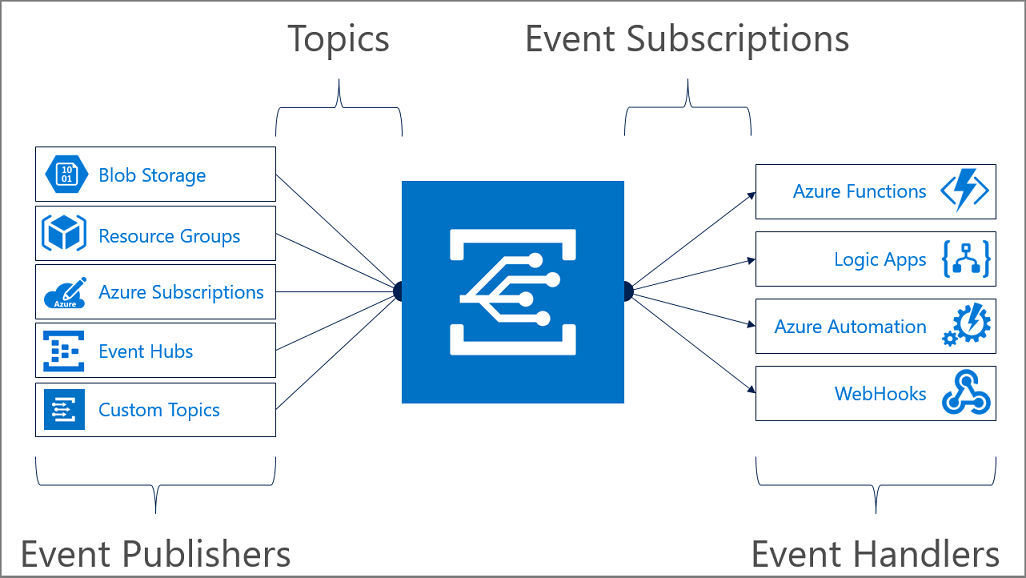Note
Access to this page requires authorization. You can try signing in or changing directories.
Access to this page requires authorization. You can try changing directories.
Azure App Configuration events enable applications to react to changes in key-values. This is done without the need for complicated code or expensive and inefficient polling services. Instead, events are pushed through Azure Event Grid to subscribers, such as Azure Functions, Azure Logic Apps, or even to your own custom HTTP listener. Critically, you only pay for what you use.
Azure App Configuration events are sent to the Azure Event Grid, which provides reliable delivery services to your applications through rich retry policies and dead-letter delivery. For more information, see Event Grid message delivery and retry.
Common App Configuration event scenarios include refreshing application configuration, triggering deployments, or any configuration-oriented workflow. When changes are infrequent, but your scenario requires immediate responsiveness, event-based architecture can be especially efficient.
Take a look at Use Event Grid for data change notifications for a quick example.

Available Azure App Configuration events
Event Grid uses event subscriptions to route event messages to subscribers. Azure App Configuration event subscriptions can include two types of events:
Event Name Description Microsoft.AppConfiguration.KeyValueModifiedFired when a key-value is created or replaced. Microsoft.AppConfiguration.KeyValueDeletedFired when a key-value is deleted.
Event schema
Azure App Configuration events contain all the information you need to respond to changes in your data. You can identify an App Configuration event because the eventType property starts with Microsoft.AppConfiguration. Additional information about the usage of Event Grid event properties is documented in the Event Grid event schema.
Property Type Description topic string Full Azure Resource Manager ID of the App Configuration that emits the event. subject string The URI of the key-value that's the subject of the event. eventTime string The date/time that the event was generated in ISO 8601 format. eventType string Microsoft.AppConfiguration.KeyValueModifiedorMicrosoft.AppConfiguration.KeyValueDeleted.Id string A unique identifier of this event. dataVersion string The schema version of the data object. metadataVersion string The schema version of top-level properties. data object Collection of Azure App Configuration specific event data. data.key string The key of the key-value that was modified or deleted. data.label string The label, if any, of the key-value that was modified or deleted. data.etag string For KeyValueModified, the etag of the new key-value. ForKeyValueDeleted, the etag of the key-value that was deleted.
Here's an example of a KeyValueModified event:
[{
"id": "84e17ea4-66db-4b54-8050-df8f7763f87b",
"topic": "/subscriptions/00000000-0000-0000-0000-000000000000/resourceGroups/testrg/providers/microsoft.appconfiguration/configurationstores/contoso",
"subject": "https://contoso.azconfig.io/kv/Foo?label=FizzBuzz",
"data": {
"key": "Foo",
"label": "FizzBuzz",
"etag": "FnUExLaj2moIi4tJX9AXn9sakm0"
},
"eventType": "Microsoft.AppConfiguration.KeyValueModified",
"eventTime": "2019-05-31T20:05:03Z",
"dataVersion": "1",
"metadataVersion": "1"
}]
Practices for consuming events
Applications that handle App Configuration events should follow these recommended practices:
- Multiple subscriptions can be configured to route events to the same event handler, so don't assume events are from a particular source. Instead, check the topic of the message to ensure that the App Configuration instance is sending the event.
- Check the
eventType, and don't assume that all events you receive will be the types you expect. - Use the
etagfields to understand if your information about objects is still up-to-date. - Use the sequencer fields to understand the order of events on any particular object.
- Use the subject field to access the key-value that was modified.
Next steps
To learn more about Event Grid and to give Azure App Configuration events a try, see: